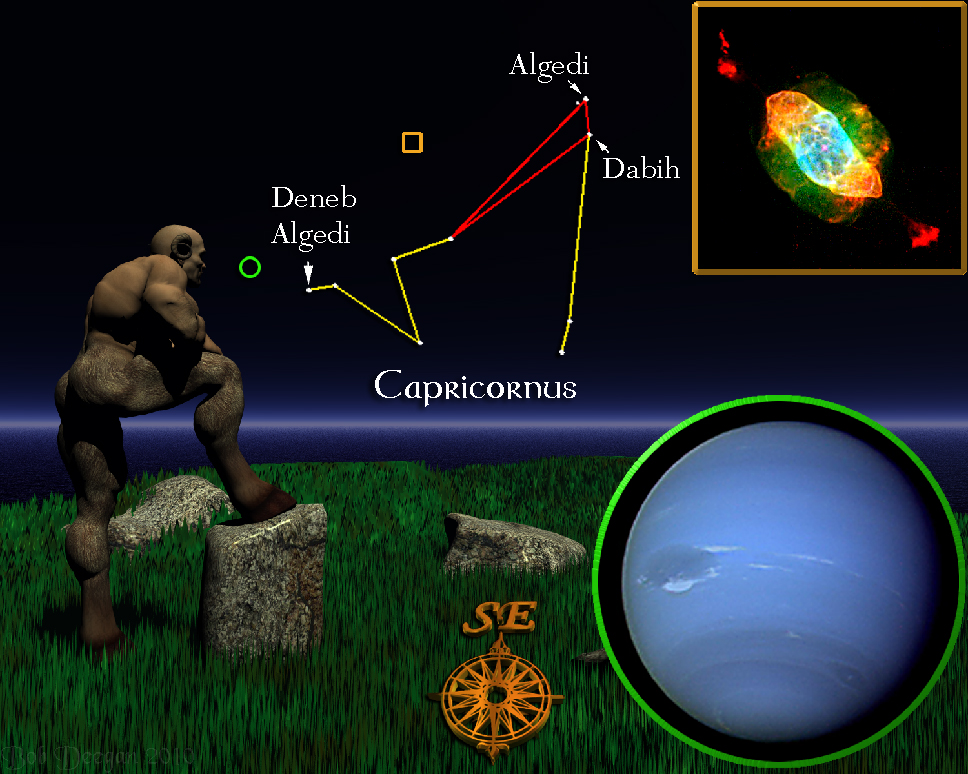
For the week including August 20, 2010

THE SEA-GOAT
The constellation of Capricornus, the Sea-Goat, comes from a particularly embarrassing moment from Greek mythology. It seems the gods of the day were having a cozy soiree near the Euphrates river when their arch-nemesis, the giant monster Typhon, crashed the party. All the gods fled, Aphrodite and Eros changing themselves into fish and swimming away in the river. Pan, an imp of the forests, tried to follow their example. As anyone who’s attempted it knows, changing yourself into a fish is very hard under the best of circumstances and Pan wasn’t all that familiar with them to begin with. When the panicked Pan ran into the water, the lower half of his body became a fish and the upper part became a goat. Roaring with laughter, Zeus, the king of the gods, commemorated Pan’s animal act by placing it among the stars.
The brightest member of this constellation is the double star Algedi, Arabic for “the Goat”. The components of this double star are wide enough apart to distinguish without difficulty. A telescope shows that both of these stars have tiny companions, making them binary star systems. Binaries are pairs of stars that evolved together and orbit around a common center of gravity. Just under Algedi is another nice binary star, Dabih whose components show an attractive color contrast when viewed with a small telescope.
The planet Neptune, shown in the Voyager 2 photograph at lower right, was easier to find than it was to discover. Back in 1613, Galileo noticed a dim greenish star in the same area of sky as Jupiter. In his notes he mentions that this star even seemed to move over the course of several weeks. But his main focus those evenings was on exploring the moons of Jupiter, gathering evidence for the theory that the Sun, not the Earth, was the center of our solar system. If he hadn’t been distracted, he would have found an even better reason to discard the accepted model.
It wasn’t until Urbain Leverrier of France took note of some minor irregularities in the orbit of Uranus that things finally clicked. He determined that there must be a large undiscovered planet in the outer regions of the solar system that was affecting Uranus with its strong gravitational pull. Using only his mathematical formula, Leverrier plotted the unknown planet’s position. In 1846, a German astronomer, Johann Galle, was asked to search for this phantom planet in the area that Leverrier had indicated. He found it on his very first try.
As Neptune slowly moves along in its 165 year orbit around the Sun, it’s headed in the direction of the “Tail of the Goat”, the star Deneb Algedi, near where it was first identified by Galle.
If you have access to binoculars or a small telescope, you can find the planet Neptune as a pale blue-green star, but you might try for the Saturn Nebula as well. Shown in the Hubble Space Telescope photograph at upper right, this extraordinarily beautiful planetary nebula is an easy find in small telescopes.
Unless otherwise indicated, all content of this web site is the copyright of Robert Deegan and all rights are reserved.
For more information, or to comment, please contact: Bob@NightSkies.org